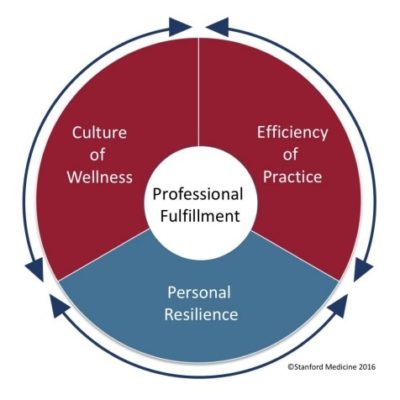By Dr. Grace Mucci, CHOC Physician Wellness Subcommittee
One year ago, a group of CHOC physicians gathered to begin the process of defining and building a meaningful wellness program throughout the health system.
As many know, physician burnout has become of great concern, and we are only beginning to appreciate the scope of this phenomenon, including the impact of burnout on ourselves, our patients and our colleagues, in addition to the complexity of issues involved. More importantly, we struggle with identifying the signs and symptoms leading to burnout, and how best to address them.
A recent survey of more than 15,000 physicians found that 44 percent of physicians reported symptoms of burnout, 11 percent reported subclinical depression, and 4 percent reported clinical depression. The gender disparity is notable, with 39 percent of males compared to 50 percent of female physicians experiencing burnout. The factors that lead to burnout are complex, and range from bureaucratic tasks and long work hours, to the challenges of electronic medical record keeping and loss of control/autonomy.

Coping strategies vary and include a number of activities, including exercise, talking with close friends and family, and ensuring adequate diet and sleep. But sometimes these approaches aren’t enough.
Depressive symptoms can begin to emerge, leading to more serious functional impairment. If left unchecked, clinical depression can result. Unfortunately, many physicians contemplate suicide. It is estimated that one doctor a day dies by suicide in the United States, the highest rate of any profession1. Even more concerning is that of those physicians who report suicide ideation, 42 percent do not tell anyone or get professional help2. Obviously, this needs to be addressed, and it needs to be addressed now.
CHOC’s Physician Wellness Subcommittee is comprised of a group of physicians dedicated to help CHOC continue to be proactive and supportive of physicians. Our mission, “To promote physician wellness to benefit ourselves and others,” captures our focus. We have been meeting since January 2018 and have established several key goals with the Stanford Medicine Model of Wellness, below, as a guide3.

Using the key areas as a guide, we have determined the following short-term goals to address each area below:
- Personal Resilience: A “Wall of Gratitude” displayed in the physician dining room (PDR) will give physicians a platform to recognize colleagues in an informal format posting words of appreciation and encouragement to one another.
- Efficiency of Practice: Improvements to the computer work station in the PDR will ease charting while also gaining needed nourishment. Results of an EMR survey, conducted with the ARCH Collaborative, will provide us with specific and targeted data that will allow us to address common EMR frustrations and issues to help increase our efficiency.
- Culture of Wellness: We are in the beginning phases of planning a “refresh room” where physicians can go to recharge, meditate and decompress. We’ve also made some improvements to the coffee machine in the PDR.
Additional long-term goals include:
- Peer-to-peer mentorship training
- Optimizing EMR practices
- Gathering Information from physicians willing to help to improve our culture of wellness
Another noteworthy CHOC-supported activity that helps to meet our Personal Resilience and Culture of Wellness goals includes restoring the joy of practice through the Communication in Healthcare seminar that we’ve deployed. Approximately 60 physicians and additional allied health providers have completed the patient communication program. Participants have reported extremely positive feedback and state the training has increased their sense of fulfillment, communication efficiency, and overall resulted in more meaningful relationships with their patients.
While there is much work to be done, we are grateful for the support we have received from CHOC, and are confident, with our collective effort, that a culture of wellness is achievable.
If you would like to help in our efforts, reach me at 714-509-8225.
Physician Wellness Subcommittee:
Co-Chairs: Drs. Felice Adler, Anjalee Galion and Grace Mucci
Members: Drs. Richard Chang, Ashish Chogle, Susan Gage, Charles Golden, Jen Ho, Himala Kashmiri, Jessica McMichael, Shoba Narayan, Ashley Plant, Christina Reh, Andrew Shulman and Anita Shah
1Anderson P. Doctors’ suicide rate highest of any profession. WebMD. May 18, 2018. Source Accessed February 28, 2019.
2Pappas S. Suicide: Statistics, warning signs and prevention. LiveScience. August 10, 2017. Source Accessed February 28, 2019.
3Bohman, B., Dyrbye, L., Sinsky, C., Linzer, M., Olson, K., Babbott, S., & Trockel, M. (2017). Physician well-being: the reciprocity of practice efficiency, culture of wellness, and personal resilience. NEJM Catalyst.




